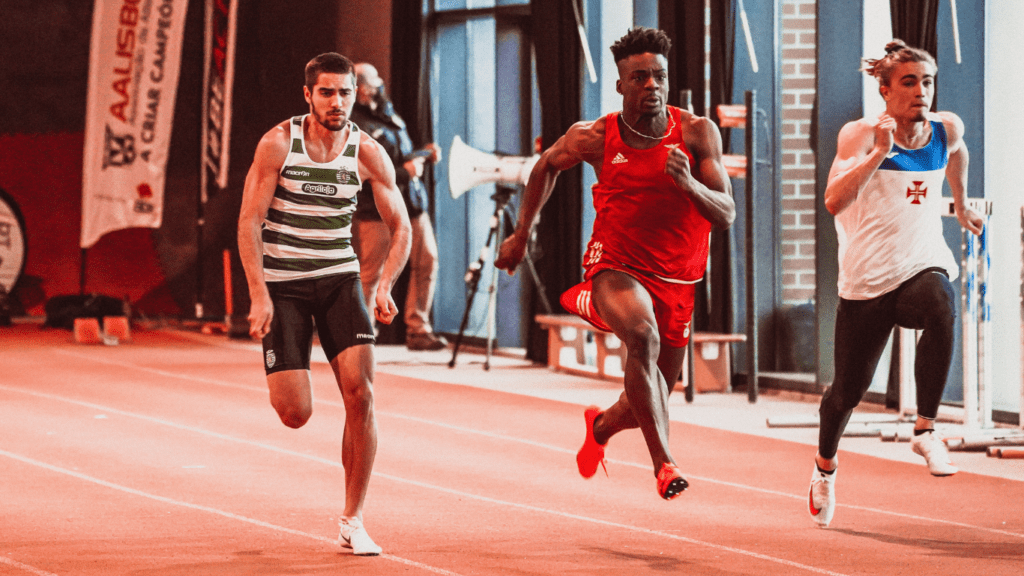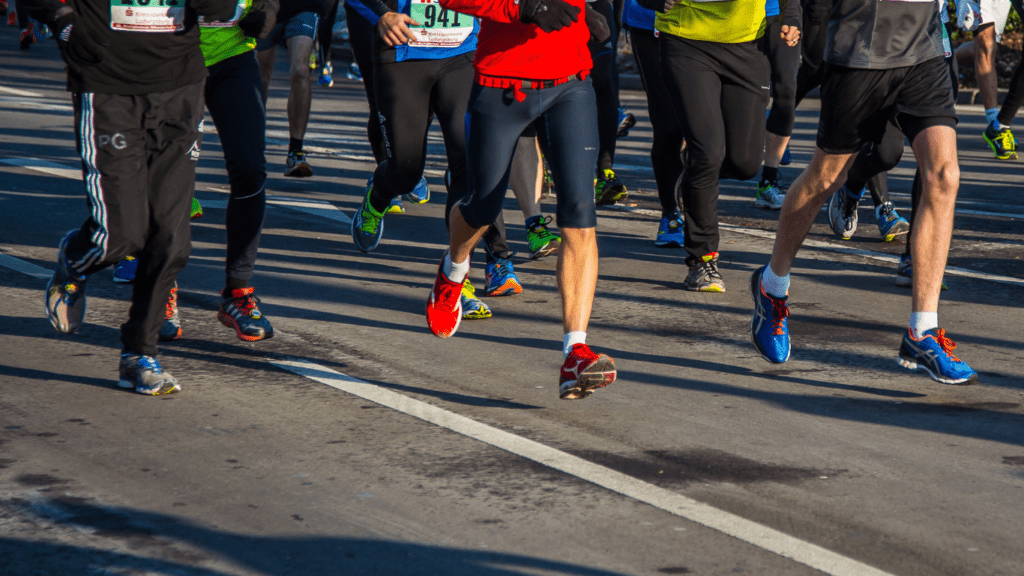Long-distance training pushes both the body and mind to their limits, but the real secret to sustaining it lies in how well you recover. I’ve learned that optimizing recovery isn’t just about resting—it’s a skill that can make or break your progress. Without proper recovery, even the most dedicated training plans can lead to burnout, injuries, or plateaued performance.
Recovery is more than taking a day off; it’s about understanding your body’s needs and giving it the tools to rebuild stronger. From nutrition to sleep to active recovery techniques, each element plays a vital role in keeping you on track. When you prioritize recovery, you’re not just bouncing back—you’re setting the foundation for consistent, long-term success.
The Importance Of Recovery In Long-Distance Training
Effective recovery ensures consistent performance during long-distance training. Training places stress on muscles, joints, and the cardiovascular system, making recovery essential for repair and adaptation. Without adequate recovery, the body struggles to rebuild, increasing injury risk.
Recovery improves endurance by allowing the body to adapt to intensified training demands. When muscles repair properly, performance efficiency increases, enhancing stamina and strength. For example, structured recovery periods help manage lactic acid buildup, preventing fatigue.
Incorporating proper recovery methods reduces burnout and mental exhaustion. Long-term training often challenges both physical and mental resilience. Techniques like stretching, meditation, or engaging in low-intensity activities promote mental clarity and motivation.
Recovery also supports immune health. Prolonged training sessions suppress the immune response, which heightens susceptibility to illnesses like colds or infections. Integrating rest days, hydration, and nutrient-dense meals mitigates these risks.
Key Recovery Skills For Long-Distance Athletes
Developing effective recovery skills is a cornerstone of sustainable long-distance training. These skills maximize endurance, reduce injury risks, and enhance overall performance.
Active Recovery Techniques
Incorporating active recovery boosts muscle repair and circulation. Low-intensity activities like:
- cycling
- swimming
- yoga
reduce soreness by promoting blood flow without overloading the muscles. Stretching, especially dynamic stretches, improves flexibility and prevents stiffness. Foam rolling, focused on areas of tension, relaxes tight muscles and aids recovery between training sessions.
Nutrition And Hydration Strategies
Proper nutrition fuels recovery by replenishing depleted energy stores and aiding muscle repair. Consuming carbohydrates and proteins in a 3:1 ratio within 30 minutes post-training accelerates glycogen restoration and muscle rebuilding. Examples include whole-grain bread with lean turkey or a banana with a protein shake. Staying hydrated balances electrolytes lost through sweat, reducing fatigue and cramps. Adding sodium-rich snacks or drinks can support electrolyte recovery.
Sleep And Rest Optimization
Quality sleep is essential for physical and mental repair. Maintaining 7-9 hours of uninterrupted sleep per night allows the body to release growth hormones crucial for recovery. A consistent sleep schedule improves energy restoration and lessens fatigue. Integrating short, 20-minute naps after intense training sessions boosts alertness. Minimizing screen exposure 1-2 hours before bedtime ensures better sleep quality by enhancing melatonin production.
Tools And Technologies To Support Recovery

Advancements in tools and technologies have revolutionized recovery for long-distance training. Incorporating these resources enhances recovery efficiency, enabling athletes to meet their training goals sustainably.
Wearable Devices And Apps
Wearable devices and apps provide real-time data to monitor recovery progress. Smartwatches and fitness trackers, like Garmin or WHOOP, measure metrics such as heart rate variability (HRV), sleep quality, and resting heart rate. A higher HRV generally indicates better recovery, giving clear insights into when to resume training.
Apps like Strava and MyFitnessPal complement wearables by tracking activity, nutrition, and hydration levels. Recovery-focused platforms such as Therabody’s app offer guided routines for stretching, muscle relaxation, and meditation. These tools simplify planning and help maintain consistent recovery habits.
Recovery Equipment And Gadgets
Recovery equipment and gadgets target muscle repair and reduce soreness. Percussion massage devices such as Theragun or Hypervolt improve blood flow and relieve muscle tension. Foam rollers, in contrast, enable self-myofascial release, breaking up tight muscle knots.
Compression gear, including NormaTec boots, optimizes circulation and helps flush out lactic acid, minimizing fatigue. Infrared sauna blankets aid recovery by reducing muscle inflammation and promoting relaxation through heat therapy. Cold therapy tools, like ice packs or cryotherapy chambers, speed up recovery by decreasing swelling and soothing damaged tissues.
Mental And Emotional Recovery Practices
Prioritizing mental and emotional recovery enhances focus, motivation, and overall performance during long-distance training. Implementing these practices supports sustainable progress and reduces risks of burnout.
Stress Management Techniques
Managing stress safeguards emotional well-being and promotes clear decision-making during high-demand training periods. Relaxation techniques like progressive muscle relaxation and breathing exercises can decrease cortisol levels, helping balance the physical and emotional impacts of intense workouts. Maintaining a structured daily routine with scheduled time for unwinding reduces overwhelm. Journaling thoughts or concerns fosters emotional clarity, especially during demanding phases of training cycles.
Building Resilience Through Mindfulness
Mindfulness strengthens resilience by improving awareness and promoting emotional stability under stress. Practices like guided meditation or mindful breathing encourage present-moment awareness, increasing focus during critical training sessions. Spending 10–15 minutes daily practicing gratitude magnifies mental positivity, fortifying resilience in challenging circumstances. Engaging in activities like mindful running, where attention shifts to each step or breath, embeds mindfulness into the training process, enhancing overall adaptability.
Common Mistakes And How To Avoid Them
1. Overtraining Without Adequate Recovery
Pushing beyond limits often leads to overuse injuries, fatigue, and decreased performance. To avoid this, I monitor training intensity and incorporate rest days. Tools like wearable gadgets help track recovery metrics, ensuring balance between strain and recovery time.
2. Neglecting Sleep Importance
Many athletes underestimate sleep’s role in recovery. Poor sleep impairs muscle repair and cognitive function. I prioritize a consistent sleep schedule and create an environment conducive to rest, such as reducing screen time and maintaining a dark, quiet bedroom.
3. Improper Nutrition Post-Training
Skipping or delaying nutrient intake hinders recovery. Consuming a post-training meal with a 3:1 ratio of carbohydrates to proteins within 30 minutes recharges glycogen stores and aids muscle repair. I plan recovery meals in advance to maintain proper nutrition.
4.Ignoring Hydration Needs
Insufficient hydration slows muscle recovery and reduces energy levels. I calculate fluid loss during training and rehydrate with electrolytes to restore balance, especially after sessions in hot conditions.
5. Neglecting Mental Recovery
Disregarding mental stress can accumulate, affecting overall performance. Daily mindfulness practices, like guided meditations or breathing exercises, keep me focused and emotionally resilient during demanding training phases.
6. Skipping Active Recovery
Rest doesn’t mean inactivity. Relying solely on passive recovery can extend soreness and delay progress. I incorporate low-intensity activities like yoga, swimming, or walking to boost circulation while allowing muscles to heal efficiently.
7. Inconsistent Use Of Recovery Tools
Using recovery equipment sporadically undermines their benefits. I schedule routine sessions with tools like foam rollers, massage guns, and compression gear to ensure consistent recovery results and maintain peak performance.



 Founder & Head Performance Strategist
Founder & Head Performance Strategist
